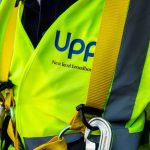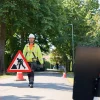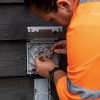New Agreement Set to Improve Mobile Coverage in London
As first promised last year, the Mayor of London, Sadiq Khan, has finally reached a new standardised wayleaves (land or property access) agreement, which aims to make the process of deploying new rooftop base stations (cell sites) for UK mobile network operators both easier and faster so as to improve 4G and 5G coverage.
The proposal was first made in June 2018 (here) as part of the mayor’s wider ‘Smarter London Together‘ roadmap and the associated ‘Connected London‘ programme. The agreement with “commercial landlords and public property owners” is important because gaining fair access to such buildings across London can still be problematic, which in some cases can lead to disputes over rents and obstructions to access (example).
We should point out that the City of London Corporation (CLC), which alongside the British Standards Institution (BSI) helped to forge the new agreement, has already managed to achieve a similar sort of agreement in the city centre (here); that was more focused upon broadband than mobile.
Advertisement
Openreach has previously also highlighted the deceptively simple sounding challenge of figuring out who to contact (owners of big buildings) in the first place (here), which requires better information sharing to resolve. However today’s announcement appears to be more focused upon mobile than broadband ISP networks, although the announcement does say: “steps must be taken now if full fibre is to become the norm across the capital.”
Theo Blackwell, London’s Chief Digital Officer, said:
“Today good mobile coverage is an expectation for all those who live, work or visit London. This guidance is part of the Mayor’s commitment to enhance mobile and fixed connectivity in the capital. It helps end uncertainty which has stopped or slowed infrastructure being put in place across London with a new, consistent approach.
At City Hall we are working to ensure we have the digital connectivity infrastructure needed through our new Connected London programme, to support Londoners in areas of poor connectivity and assist the future roll out of 5G, which will hugely benefit businesses and the public alike.”
Hamish MacLeod, Director at Mobile UK, said:
“Mobile UK welcomes these standard template agreements, which result from partnership between landowners, operators and other stakeholders, all of whom recognise the vital importance of mobile connectivity to the future prosperity of London and the UK more generally.”
Admittedly further changes may yet be required if full fibre (FTTP) broadband and 5G mobile is to spread at the sort of pace desired. The Government tabled two related consultations as part of last year’s Budget 2018 announcement, which proposed to mandate Gigabit-capable broadband connections for new build homes and would also make it easier for network operators to access buildings when landlords fail to respond.
However, discussions with stakeholders are understood to have resulted in plenty of disagreement over the detail of those consultations, which seems to have delayed the outcome. Hopefully this will be resolved once the new National Infrastructure Strategy (NIS) is published as most operator’s agree that resolving such issues could have a big impact upon coverage.
Mark is a professional technology writer, IT consultant and computer engineer from Dorset (England), he also founded ISPreview in 1999 and enjoys analysing the latest telecoms and broadband developments. Find me on X (Twitter), Mastodon, Facebook, BlueSky, Threads.net and Linkedin.
« INCA Name Shortlist for 2019 AltNet UK Broadband ISP Awards
Big UK ISPs Accused of Overcharging Customers by up to £236 »

















































Comments are closed